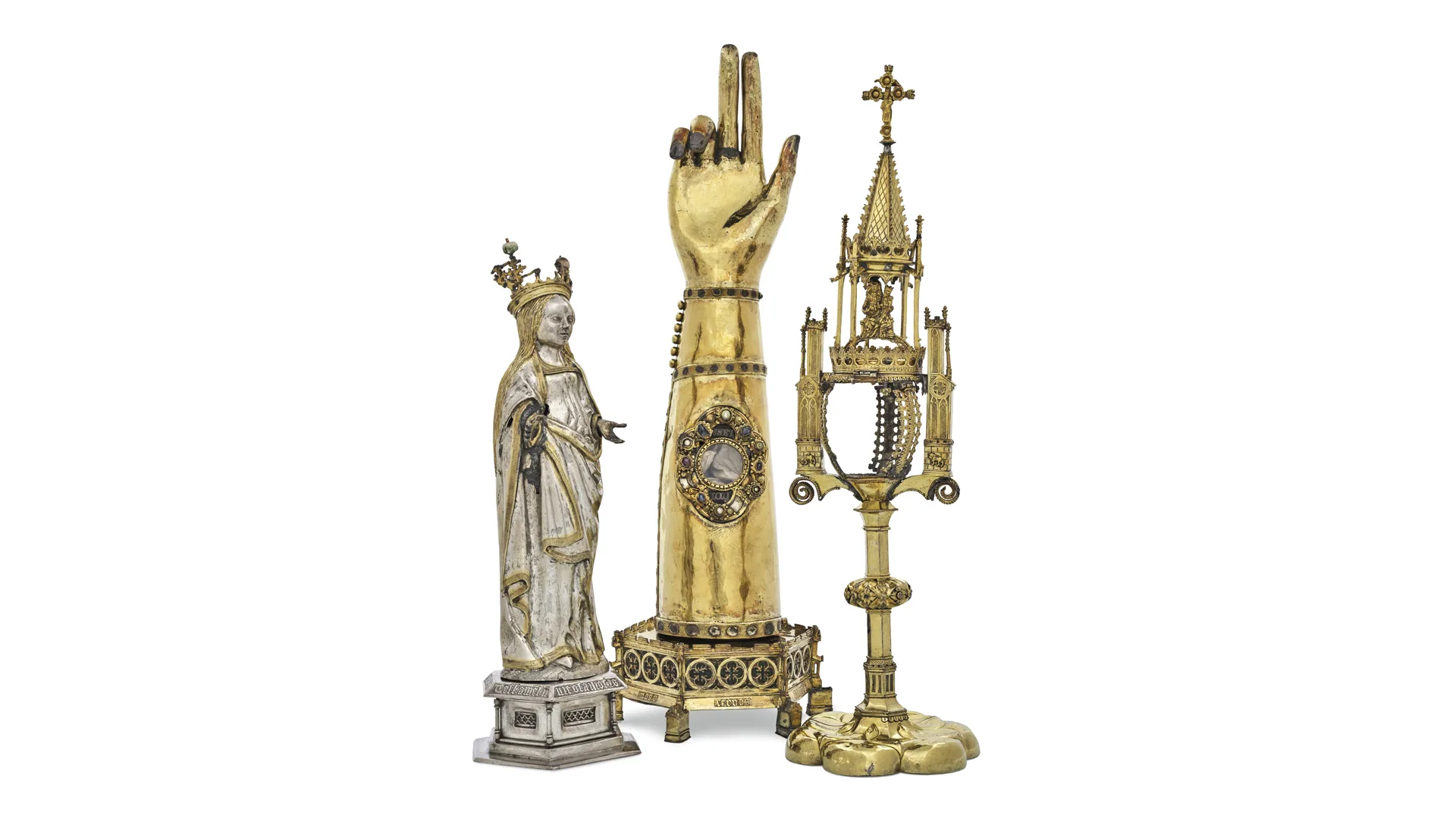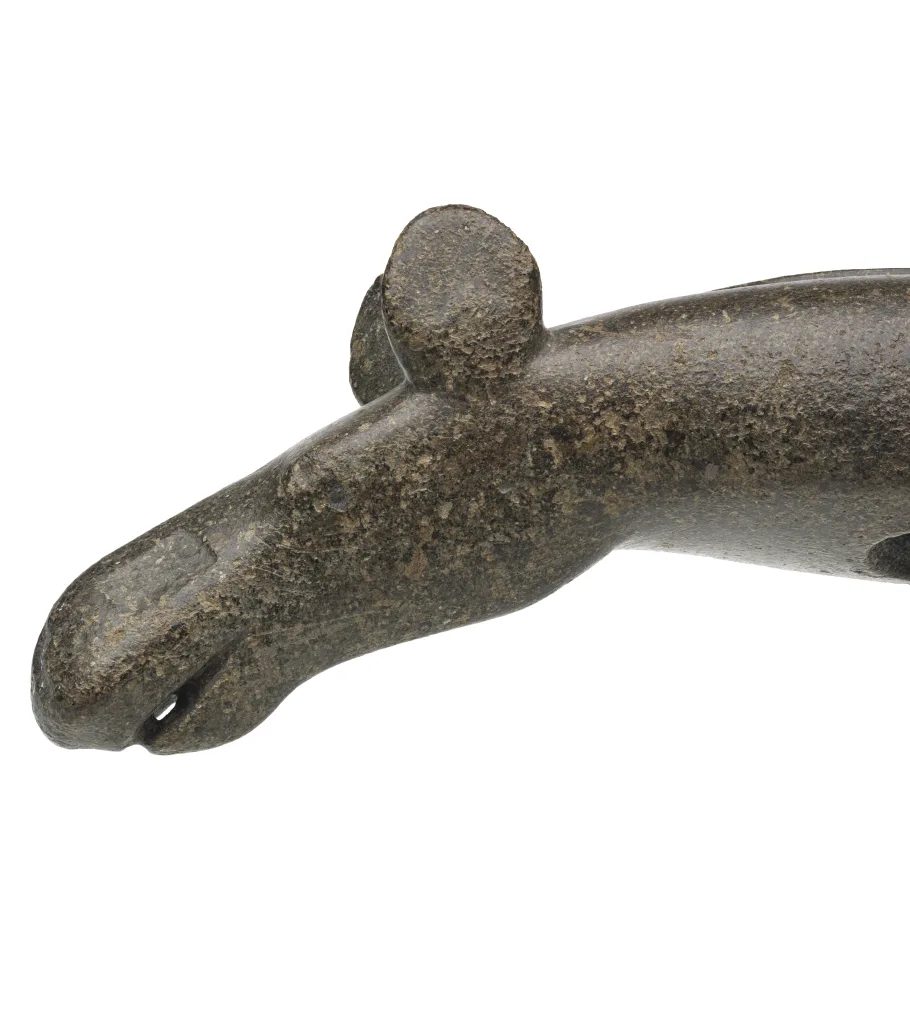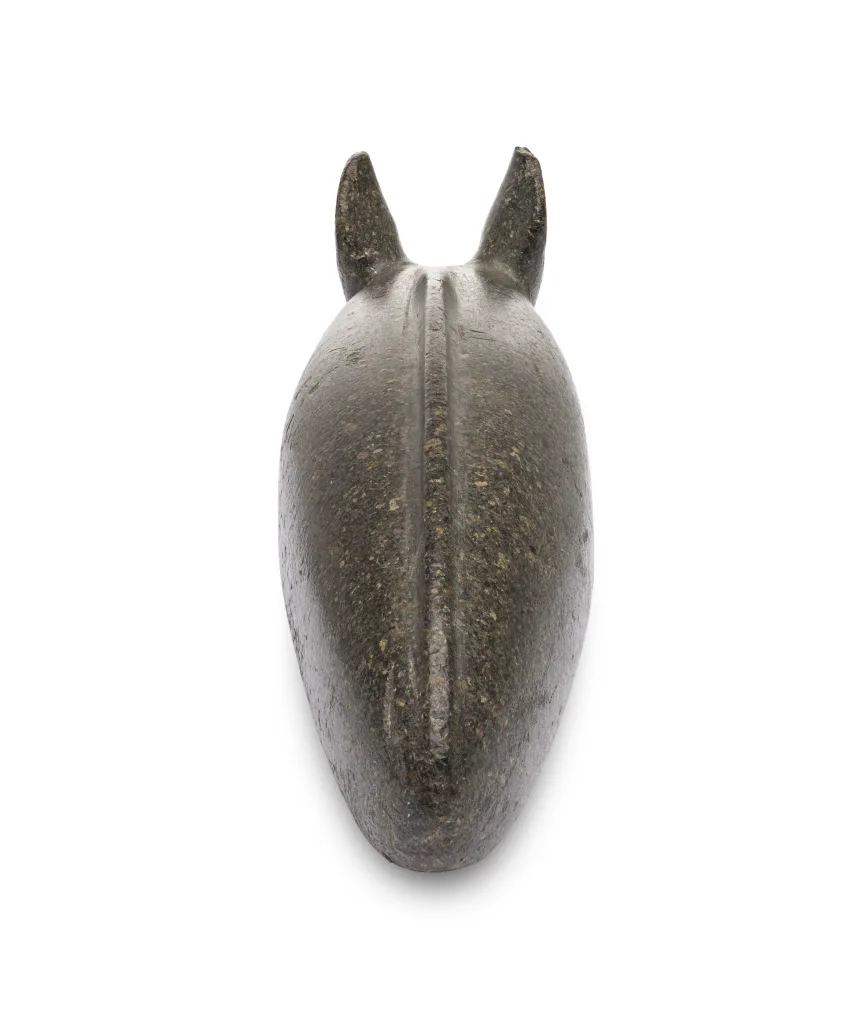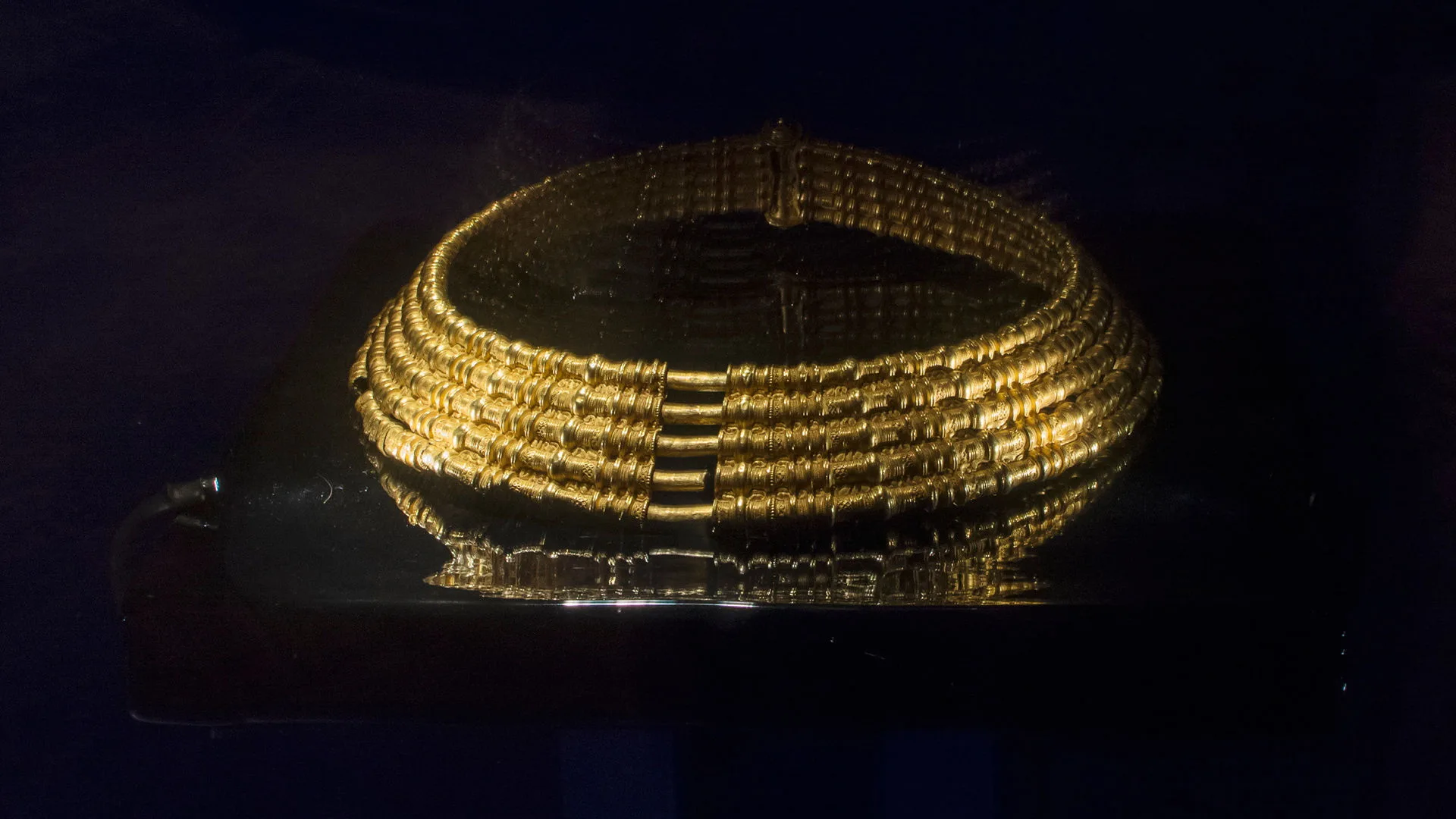The collections of the Swedish History Museum
The oldest parts of the collections
The collections of the Swedish History Museum have a long history, reflecting the development of heritage conservation and archaeology in Sweden. The oldest parts of the collections come from the College of Antiquities and the Antiquities Archives, with some objects dating as far back as the 17th century. One example is the finds from national antiquarian Johan Hadorph’s archaeological excavations at Birka – the first ever carried out at this World Heritage site.
Read more about Johan Hadorph on the Birka Portal (in Swedish)
Gold treasures, weapons, and war booty
In the 17th and 18th centuries, prehistoric gold treasures and Bronze Age weapons also began to be acquired. At the time, there were no methods for dating the objects. Among the older parts of the collections is the so-called Linköping hoard – a unique set of church objects found in a field in Linköping in 1676. Some objects also came from the royal collections via the Royal Chamber of Revenues. One such example is the Elisabeth Reliquary, taken as war booty in Germany during the Thirty Years’ War.

The collections grew
In the 19th and 20th centuries, archaeology and art history emerged as academic disciplines at universities. During the same period, the museum's collection of ecclesiastical objects expanded significantly. This occured especially in the late 19th and early 20th centuries, often when parishes wanted to renovate or modernize their churches. As a result, the museum came to manage one of Northern Europe’s most important collections of medieval church art and ecclesiastical textiles.
When excavations began to shape the collections
From the 1860s onward, archaeological excavations were carried out at sites that have since become central to our understanding of the past – such as classic Stone Age settlements and graves, including the Stora Förvar cave on Stora Karlsö, Siretorp in Blekinge, and Fagervik in Östergötland. Other excavated sites included burial mounds from the Bronze and Iron Ages, the Viking town of Birka, and the mass graves from the Battle of Visby in 1361. Objects from these sites are now an important part of the collections of the Swedish History Museum.


Alunda moose. Photo: Ola Myrin, The Swedish History Museum/SHM, CC-BY 4.0.
How the Alunda moose became part of the collections
At the time, it was also common for private individuals to have their own collections, ranging from archaeologists and geologists to other enthusiasts, and these were sometimes donated to the museum. Another important source of acquisitions was stray finds uncovered during digging and construction work, especially when fields and wetlands were manually ploughed and drained. The museum purchased rare and unique items that were deemed to have national significance. That is how iconic objects like the Alunda moose became part of the collections. Many treasures from across the country were added to the museum’s holdings during this period.
The collections today
Today, Swedish law requires that all ancient monuments be archaeologically investigated before land can be developed. Since the 1950s, systematic excavations of settlements, burial grounds, production sites, and urban layers have been carried out before construction begins. It is now primarily these archaeological excavations, conducted under the Swedish Heritage Conservation Act, that generate the large influx of objects shaping the museum’s collections. The collections include objects from all time periods up to 1850.
At the same time, many archaeological finds are also deposited at local museums near the sites where they were discovered. As a result, new additions to the collections today differ somewhat in character from those in the past. The collections now serve as both an important source for research and a key part of the museum’s exhibitions.
Search the Collections
Our collection is digitized, and we are constantly working to enrich the information about our objects and to increase the number of images. You can search among the images and objects already available in our online database. All information is free to use, and most of the media is licensed under open Creative Commons licenses. Some images depict copyright-protected works; through an extended collective license agreement with Bildupphovsrätt in Sweden (BUS), the National Historical Museums have the right to display these images on Search the Collections.
We share the database with the other museums that are part of the National Historical Museums. Therefore, you will find objects from the Economy Museum, the Hallwyl Museum, the Swedish History Museum, the Royal Armoury, Skokloster Castle, the Tumba Paper Mill Museum, and the Swedish Holocaust Museum in the database.





